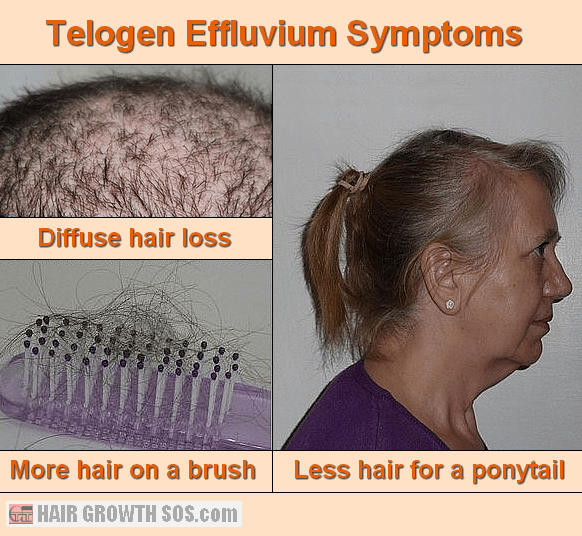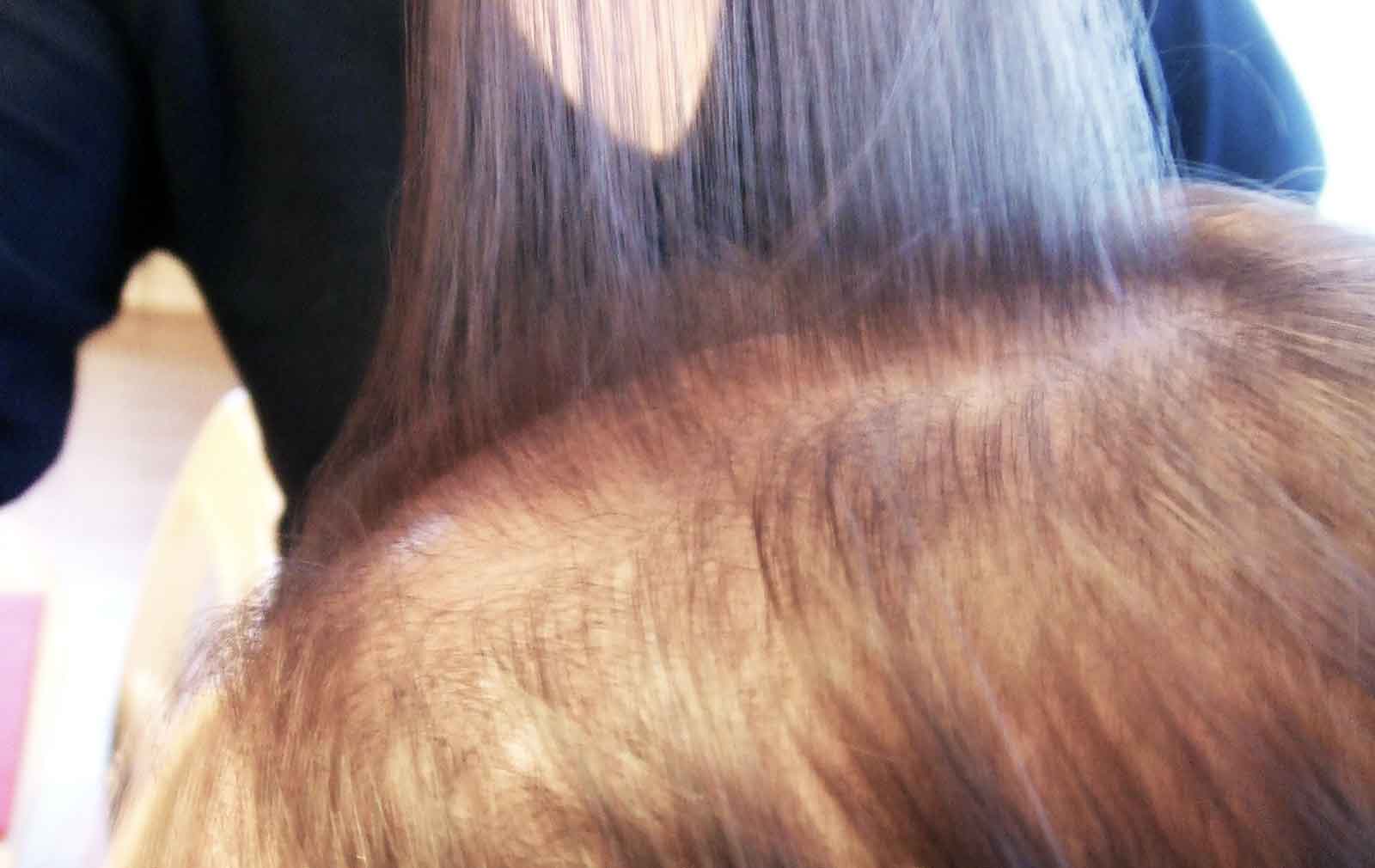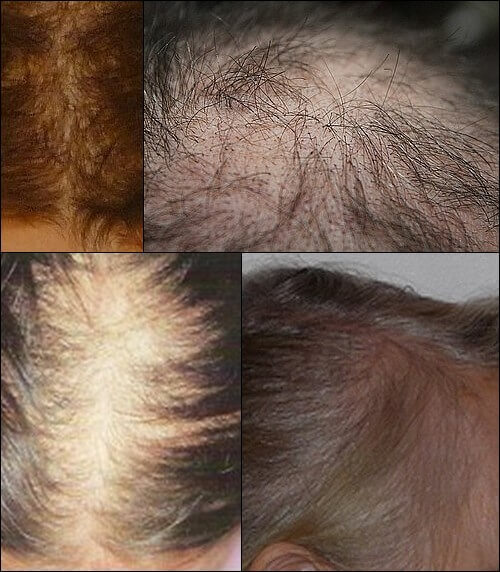Table Of Content

Nutritional support to ensure adequate iron stores, vitamin levels, balanced protein, fat, and carbohydrate intake, and hydration are easy means to keep the body resilient. More and more, we are seeing a rise in mental load from a variety of sources—work, relationships, and finances—which behooves us to incorporate mindfulness and stress management into our daily lives. The benefits of daily exercise and adequate sleep cannot be overstated, as both are crucial in cellular repair processes.
Enhancing Healthcare Team Outcomes
When seeing their physician as a patient, many return to hopefulness that my reassurances and treatment plans will work for them. Telogen effluvium is a scalp disorder characterized by diffuse, non-scarring shedding of hair [1]. The term “telogen effluvium” was proposed to differentiate it from excessive shedding of normal club hair. Various hypotheses are put forward regarding the pathophysiology of telogen effluvium.
How can TE patients be managed?
A wide variety of potential triggers have been implicated in the pathogenesis of TE [7]. True incidence of TE is not well determined due to lack of data, especially of subclinical cases [8]. Telogen effluvium is one of the most common causes of alopecia. It is a scalp disorder characterized by excessive shedding of hair. Several factors such as drugs, trauma, and emotional and physiological stress can lead to the development of telogen effluvium. Multiple alterations in the hair cycle have been proposed as the underlying mechanism.
Major stressors can affect your hair — but only temporarily.

However, if you’ve noticed more strands falling out of your head than normal, you may be experiencing alopecia, the medical term for hair loss. Common diagnoses include androgenetic alopecia, alopecia areata, telogen effluvium, and lymphocytic scarring alopecia, Agbai tells USA TODAY. Then, if this is impossible, as it is the rule, a clobetasol foam can be used which is very easy to apply. Controlled studies on its use are difficult to undertake, because of the three-month lag and the typical intermittency of chronic TE and the consequent need of a too large number of subjects. In the absence of any approved treatment, clobetasol foam is my preferred attempt to do something vaguely rational.
Telogen effluvium (TE) is considered the second most common form of hair loss diagnosed by dermatologists. It occurs when there’s a change in the number of hair follicles that are growing hair. Androgenic alopecia (male pattern baldness and female pattern baldness) is a type of hair loss that’s more gradual than telogen effluvium.
It typically happens a few months after your body goes through something physically or emotionally stressful. Hair loss due to telogen effluvium is usually temporary, and your hair often grows back without treatment once you no longer have that stress. Chronic telogen effluvium (CTE) is a diffuse hair loss of scalp that persist for more than six months [10]. It is characterized by abrupt, excessive, alarming, diffuse shedding of hair that runs a fluctuating course over several years [5,6]. This condition predominantly affects healthy women in the fourth to fifth decade of life [10]. Examination shows normal or high hair density, although there may be some rarefaction with short hair along the frontotemporal region [11].
What is the differential diagnosis for telogen effluvium?
This hair loss, telogen gravidarum, occurs approximately three months after childbirth [12]. If the causative event is identified by history and has been adequately treated, no further treatment is required. If a hormonal or dietary imbalance or metabolic illness is present, hair growth will return after these factors are corrected. If a medication is the cause of the shedding, hair growth will restart after the medication is withdrawn. The physical examination is grossly normal, as it is difficult for the casual observer to appreciate the loss of hair volume.
Management and Treatment

An hour later, bleak photo evidence in hand, I finally asked myself, Am I seriously losing my hair? On some level, I think I already knew the answer; you can only ignore a thinning ponytail and clumps of hair in the shower before you start to seriously wonder. Bathing, which had always been a respite for me, started to border on anxiety-inducing. The easiest way to lookup drug information, identify pills, check interactions and set up your own personal medication records. In brief, the same mitosis-blocking insult may cause anagen effluvium or TE independently from its quality. Topical corticosteroids are employed by dermatologists in the treatment.
When significantly more than 10% of the scalp hair is in the telogen phase, it can manifest as significant hair shedding. Anagen effluvium causes faster and more dramatic hair loss than telogen effluvium. You may be able to pull clumps out of your scalp, or you may notice much more hair on your pillow, in your brush, or collecting in your shower drain. Telogen effluvium is a temporary condition of excessive hair shedding.
In the case of acute telogen effluvium, videodermoscopy will show numerous short re-growing hair with no variability of density [21]. Researchers found an increased frequency of telogen effluvium between July and October. They hypothesized that it could be actinic effluvium, a summer effect, induced by sunlight and ultraviolet (UV) light, manifesting in autumn [16]. Electron microscopy of hair exposed to sunlight reveals alterations in the cellular components and damage to the hair cuticle and cortex. Both of these mechanisms can be attributed to increased shedding of hair in the telogen phase; however, it is not scientifically proven yet [1].
Cessation of the additional stress allows for the return of the body’s routine functioning and the resumption of the normal hair cycle. Experiencing a sudden change in hormone levels can trigger TE hair loss. Similar to an environmental change, hormone fluctuation can cause hair follicles to go into a prolonged resting state. If TE occurs during pregnancy, hair growth is usually restored within six months to a year after childbirth.
Paloma Faith reveals 'stress-related alopecia': Why does stress cause hair loss and what can you do about it? - BreakingNews.ie
Paloma Faith reveals 'stress-related alopecia': Why does stress cause hair loss and what can you do about it?.
Posted: Thu, 11 Apr 2024 07:00:00 GMT [source]
A healthcare provider can confirm it during a physical examination of your scalp. They may conduct a “pull test,” in which they gently pull a small clump of 40 to 60 hairs between their fingers. Under typical conditions, they may only pull two to three hairs from your scalp. If you have telogen effluvium, they may pull at least four to six hairs from your scalp with white bulbs at the roots. “The condition is thought to be hereditary and while it doesn't usually cause baldness like in men, it can still affect self-esteem and confidence. If you're concerned about female pattern baldness, talk to your doctor who can advise you on possible treatment options.
In TE hair loss is usually less than 50% of the scalp hair [5]. This condition was first described by Kligman in 1961, as a disease state of hair follicle, where diffuse shedding of telogen hair are seen [4]. Kligman hypothesized that whatever is the cause of hair loss, the follicle tends to be in the form of premature termination of anagen. Later the follicle precipitates into catagen and transforms into resting stage mimicking telogen [6]. The observation of increased telogen hair shedding does not infer a cause. Establishing aetiology of telogen effluvium requires elicitation of relevant history and appropriate laboratory investigations to exclude endocrine, nutritional and autoimmune disorders [6].
Iron deficiency without anaemia is seen in 20% of cases and manifests solely with a serum ferritin below 20 mg/l [7]. No treatment for active telogen effluvium has been proven effective. The most difficult patient to be managed is the one who comes complaining about shedding her hairs “by the handful”.
TE course may be acute or chronic when its duration exceeds 6 months. Of course, some of the forms described above cannot be chronic. Intermittency, however, is important especially because the spontaneous recovery that can intervene in the course of any chronic TE may be erroneously credited to the therapy. This may explain some of the “successes” of popular treatments which cannot be but placebos and make any controlled study difficult to undertake. The International Society of Hair Restoration Surgery (ISHRS) is a global non-profit medical association and the leading authority on hair loss treatment and restoration. The relationship between emotional stress and hair loss is ambiguous since hair loss itself is a source of emotional stress to the patient [11].
Normal hair cycle results in replacement of every hair on the scalp by 3-5 years [3]. Telogen effluvium (TE) is the most common cause of diffuse hair loss. Because the telogen phase typically lasts several months, the enhanced shedding will also continue for 2-3 months after the stressor is removed. Telogen effluvium is triggered when physiologic stress causes a large number of hairs in the growing phase of the hair cycle (anagen) to abruptly enter the resting phase (telogen).

No comments:
Post a Comment